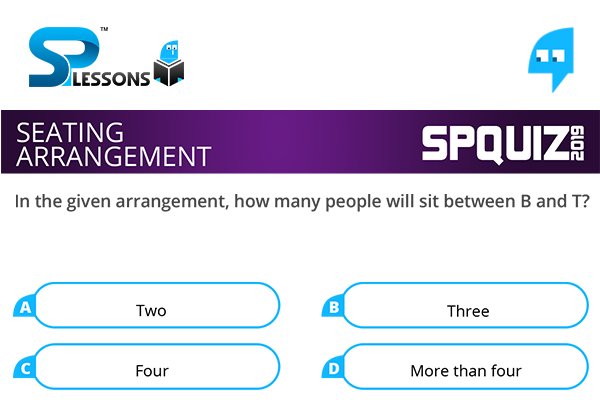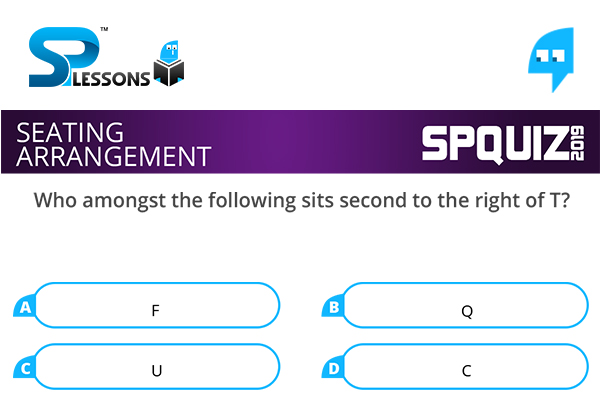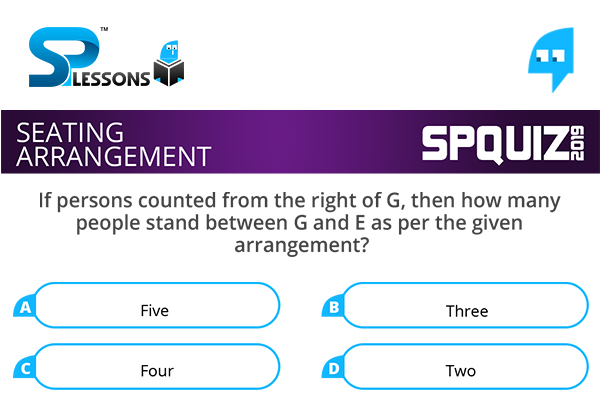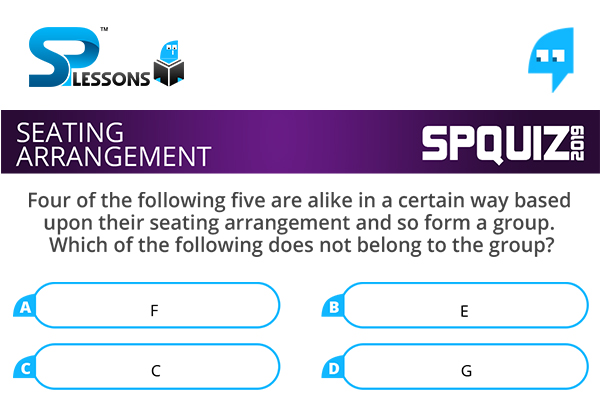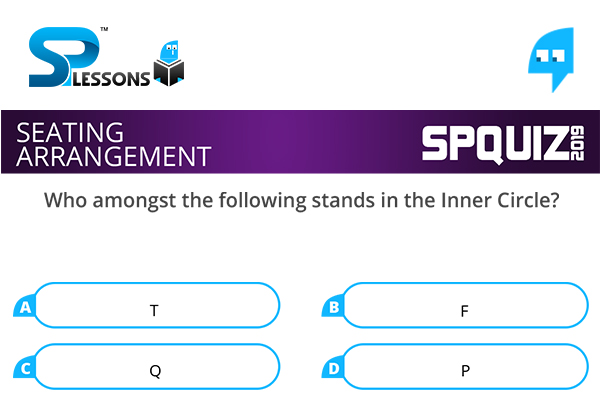 Introduction
Introduction
The questions on seating arrangement are regular feature of almost every competitive examination. In these questions, you have to arrange a group of persons fulfilling certain conditions. This is also written as sitting arrangement or sitting arrangement reasoning at some places.
Seating Arrangement is one of important topic in Reasoning Ability Section. In Seating Arrangement Quiz 10 article candidates can find questions with an answer. By solving this questions candidates can improve and maintain, speed, and accuracy in the exams. Seating Arrangement Quiz 10 questions are very useful for different exams such as IBPS PO, Clerk, SSC CGL, SBI PO, NIACL Assistant, NICL AO, IBPS SO, RRB, Railways, Civil Services etc.
Directions (1-5): Study the following information carefully and answer the questions given below:
There are 16 persons – B, C, D, E, F, G, H, I, P, Q, R, S, T, U, V and W standing in a Circular plot. Inside a circular plot, a circularly shaped garden is developed. The persons who are standing inside the garden facing outside. The persons who are standing outside the garden facing inside the centre and lives in a different number of floors. So all the persons standing in the inner circle faces the persons standing in the outer circle and hold a different number of chocolates.
G faces outside and S faces G. D sits immediate right of G. There are four persons sits between G and E. H is not an immediate neighbour of E. There are two persons standing between D and H. H faces R. There are three persons standing between R and U. U stands exactly between the B and F. B faces D. There are two persons standing between P and C. Neither S nor R is an immediate neighbour of P. I stands to the immediate left of H. I faces T. The one who faces F stands exactly between the persons Q and W. W faces P. H stands second to the left of G. B lives on the second floor and sits exactly opposite to the person who lives on the floor which is the square number of the floor of B. F lives on the third floor and stands exactly opposite to the person who lives on the floor which is the square number of the floor of F. P lives on 6th floor and S lives immediately above P. U lives immediately below B. R lives immediately above T. The one who faces P holds chocolates two less than the number of the floor occupied by P. The one who faces U holds chocolates six more than the number of the floor occupied by U. Number of chocolates hold by E is the difference between the number of chocolates hold by D and W. Number of chocolates hold by G is the sum of the number of chocolates hold by D and E also equals to number of chocolates hold by V and H. Number of chocolates hold by I is the square of the number of chocolates hold by H.
 Q1
Q1
In the given arrangement, how many people will sit between B and T?
- A. Two
B. Three
C. Four
D. More than four
 Q2
Q2
Who amongst the following sits second to the right of T?
- A. F
B. Q
C. U
D. C
 Q3
Q3
If persons counted from the right of G, then how many people stand between G and E as per the given arrangement?
- A. Five
B. Three
C. Four
D. Two
 Q4
Q4
Four of the following five are alike in a certain way based upon their seating arrangement and so form a group. Which of the following does not belong to the group?
- A. F
B. E
C. C
D. G
 Q5
Q5
Who amongst the following stands in the Inner Circle?
- A. T
B. F
C. Q
D. P
Other Articles
 Study Guide
Study Guide
 Exams
Exams
| Competitive Exams - College Entrance Exams | |||
|---|---|---|---|
| Category | Notification | ||
| Diploma | NITC New Delhi | Goa Diploma Admissions 2019 | |
PG |
GATE 2020 |
ATMA 2019 |
XAT 2020 |
| Click Here For – All India Entrance Exam Notifications | |||
 Daily CA
Daily CA
 Job-Alerts
Job-Alerts
 SP Quiz
SP Quiz
| Competitive Exams - Practice Sets | |
|---|---|
| Category | Quiz |
| Quant Aptitude | Time and Work |
| English Knowledge | Spotting Errors |
| Insurance Awareness | Insurance Awareness |
 GK
GK
| General Knowledge for Competitive Examinations | |
|---|---|
| Topic | Name of the Article |
| GK - World | World Longest Train Services |
| Important Newspapers | |
| GK - India | Indian Sobriquets |
| Disaster Management in India | |
| GK - Abbreviations | Insurance Domain Abbreviations |
| Banking Abbreviations & Finance Abbreviations | |
| GK - Banking & Insurance | Bank Board Bureau |
| ATMs – India | |
| GK - Science & Technology | Science Branches |
| Indian Space Centers | |
| Famous Websites | |




